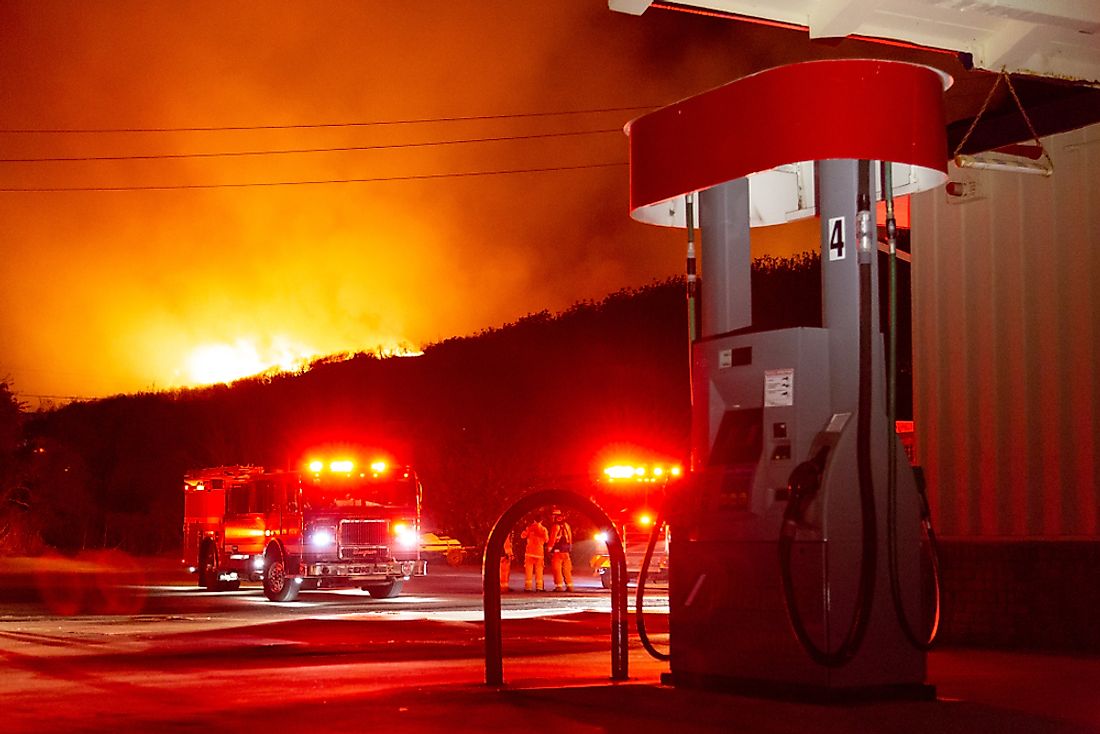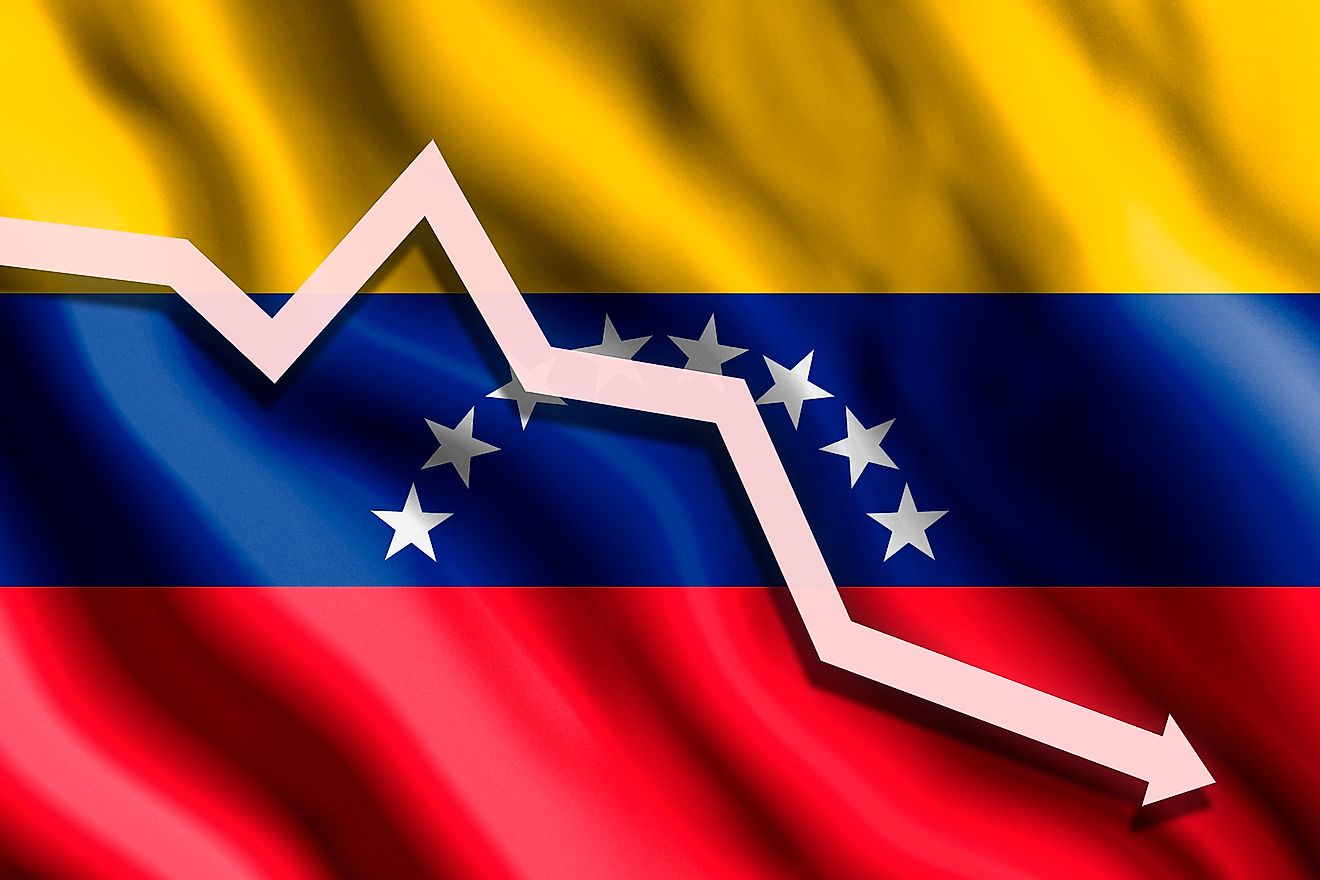Is Climate Change Making Wildfires Worse?

According to scientists at NASA, average global temperatures have risen by 1.4°F since 1880, with the warmest years to date occurring in the last five years. Global warming has led to changes in precipitation across the world, with wet areas receiving more rainfall, and dry regions becoming drier. In the United States (US), early spring melt coupled with higher temperatures in spring and summer is leading to drier soil conditions that last longer, which increases the possibility of drought and a prolonged wildfire season. The hot and dry conditions also mean that wildfires are likely to increase in both intensity and severity.
Western US: One Of The Worst Hit Areas
The western part of the United States has experienced wildfires at an increasing frequency since the mid-1980s. Additionally, fires since the 1980s have also lasted five times longer and devastated areas six times larger. In the period between 1986 and 2003, which is a period with observable climatic changes, wildfire occurrence was four times greater compared to the period between 1970 and 1986, suggesting that climate change affects wildfire frequency and severity. Human activities such as land use, poorly extinguished campfires, and irresponsible disposal of cigarettes are also blamed for higher wildfire frequency. Increased wildfire activity in areas such as the Northern Rockies and Yosemite National Park, where human activity is limited, however, suggests that climate change is indeed a significant factor that cannot be ignored.
Understanding Wildfire
The most fundamental concept in understanding wildfires and their intensity is that fires need fuel (any combustible matter). While other elements such as ignition and topography are also factors, researchers typically tend to focus on fuel characteristics, including type, density, and condition of the wild land or forest. The relationship between climatic conditions and the nature of the fuel (forests, scrubland, and grasslands) is relatively easy to study, as significant data on the subject is readily available. For example, hot and dry summers in areas such as eastern Oregon result in different forest characteristics compared to Washington’s Olympic Peninsula, which has a temperate and damp climate. Short-term weather conditions like El Nino also significantly affect the characteristics of fuels. Researchers have observed that areas with dense, dry, and highly flammable material are more likely to experience more severe wildfires compared to other regions.
Scientific Analysis of the Link Between Climate Change And Wildfires
Scientists studying wildfires typically structure their research around factors such as vegetation, ignition, and climate variables, including precipitation and temperature. These studies include empirical analysis of past data to find a correlation between wildfire frequency and severity and the existence of the factors listed above. While the individual elements do not directly lead to wildfires, empirical analysis of all of them can help identify correlations that are vital in finding links between climatic conditions and wildfires. With data collected from these studies, models can be developed that forecast changes in the factors leading to fires, as well as make projections on the future characteristics of wildfires. So far, climate models reveal that increasing concentrations of greenhouse gases in the atmosphere will significantly affect seasonal precipitation and temperature. Refinement of such regional models shows that wildfires will increase in frequency in regions that will experience higher temperatures and lower precipitation as a result of climate change.
Effects of Low Precipitation
Some of the correlations identified by scientists are relatively simple to understand. A drier summer is strongly correlated with an increase in the area affected by wildfires. Fire records in the US also show a clear link between fire activity and drought. Records also show that drier conditions are on the rise. Between 1979 and 2016, summer precipitation has been on the decline in the majority of forests in the western United States. Data collected between 1984 and 2011, unsurprisingly, also shows a significant increase in the number of fires in the Sierra, Rocky, and Cascade mountain ranges. The increase in the number of large fires in the areas confirms the relationship between wildfires and changes in climatic conditions.
Effects of Early Snowmelt
Rapid snowmelt strongly correlates with an increased frequency of wildfires since it implies there is an earlier start to the fire season. Analysis of seasonal snowmelt is especially essential due to its effect on areas such as the Sierra Nevada and Rocky Mountain ecosystems, which rely on late snowmelt to withstand arid summers. The regions are highly susceptible to wildfires when spring arrives early. The area that begins in the southern part of Washington and extends into Oregon is also highly sensitive due to moisture deficit resulting from early snowmelt. Researchers found that one-third of the years that have early snowmelt experience a 56% increase in the number of wildfires and a 72% increase in the total area affected by wildfires. However, the influence of snowmelt on wildfires is neutralized by summer rains.
Effects of Higher Temperatures
Temperatures also play a significant role in influencing wildfires. An increase in temperatures may lead to heat stress in flammable trees, which makes them more likely to catch fire. High temperatures also create arid conditions that are conducive to severe fires. However, the effect of temperatures on wildfire occurrence is moderated by summer rains.
Climate Change and Bark Beetles
The rise in global temperatures results in the drying of water-stressed forests, which leads to increased forest infestation by bark beetles and other insects that are active in warm temperatures. Bark beetles kill hundreds of millions of trees in the western part of the United States and Canada. The insects have devastated vast areas of forestland and turned trees into kindling awaiting catastrophic fires. From 2010 to 2017, insect outbreaks in California killed over 120 million trees, and Texas lost 300 million trees to similar insect outbreaks in 2011 alone. At higher latitudes, warmer temperatures have led to a dramatic increase in mountain pine beetle populations that were historically limited by relatively colder winters. Mountain pine beetles have devastated over 25 million acres of trees in the western United States since 2010.
Costs Associated with Wildfires
The annual cost of property damage caused by wildfires is thought to be in hundreds of millions of dollars. Expenses related to wildfire suppression are also extremely high. Fire suppression costs incurred by the US Forest Service totaled billions of dollars between 2000 and 2017, exceeded $2 billion in 2015, and reached nearly $3 billion in 2017. Property damage risks in wildland-urban interface (WUI) zones have also increased exceptionally. For example, regions in California such as the northeast of Sacramento, the Bay Area, and coastal southern California, contain more than 5 million homes. Wildfires also have considerable health and environmental costs that cannot be ignored. In addition to threatening lives directly, fires also cause air pollution, which leads to lung diseases and breathing illnesses. Wildfires also increase the likelihood of flash floods due to the loss of vegetation and poorly drained burned soils. Flash floods can be devastating, particularly in low lying areas such as the semi-arid Southwest part of the country.
Effects of Wildfires on Climate Change
Wildfires across the world resulting from human activity and natural phenomena are causing smoke emissions, and areas of burned vegetation are observable from space by NASA satellites. Carbon emissions released into the atmosphere from fires and decomposing trees lead to global warming and climate change, hence continuing a vicious cycle in which one increases the long term intensity of the other.
Mitigation
There are both long-term and short-term measures that governments and local populations can take to minimize wildfires and the effects they have on our everyday lives. Short-term measures include implementing practical fire safety efforts, including the creation of buffer zones between forests susceptible to wildfires and human settlements, following fire-safety standards set by the state and federal government, and avoiding activities that might lead to fires. Long-term measures should focus on taking steps to reduce global warming. Addressing climate change remains the most sustainable method of dealing with wildfires.











